-
FACTOR ANALYSIS
-
\r\n\r\n\r\nValue chain Analysis
-
\r\n\r\n\r\nPorter's
-
Five Forces Analysis
-
\r\n\r\n\r\nBargaining Power of Suppliers
-
\r\n\r\n\r\nBargaining
-
Power of Buyers
-
\r\n\r\n\r\nThreat of New Entrants
-
\r\n\r\n\r\nThreat
-
of Substitutes
-
\r\n\r\n\r\nIntensity of Rivalry
-
\r\n\r\n\r\n\r\n\r\nCOVID-19
-
Impact Analysis
-
\r\n\r\n\r\nMarket Impact Analysis
-
\r\n\r\n\r\nRegional
-
Impact
-
\r\n\r\n\r\nOpportunity and Threat Analysis
-
\r\n\r\n\r\n\r\n\r\n\r\n\r\n
-
\r\n
-
\r\n\r\n\r\nAnticoagulation
-
Market, BY Drug Type (USD Billion)
-
\r\n\r\n\r\nVitamin K
-
Antagonists
-
\r\n\r\n\r\nDirect Oral Anticoagulants
-
\r\n\r\n\r\nHeparin
-
\r\n\r\n\r\n\r\n\r\nAnticoagulation
-
Market, BY Route of Administration (USD Billion)
-
\r\n\r\n\r\nOral
-
\r\n\r\n\r\nInjectable
-
\r\n\r\n\r\nTransdermal
-
\r\n\r\n\r\n\r\n\r\nAnticoagulation
-
Market, BY Indication (USD Billion)
-
\r\n\r\n\r\nAtrial Fibrillation
-
\r\n\r\n\r\nDeep
-
Vein Thrombosis
-
\r\n\r\n\r\nPulmonary Embolism
-
\r\n\r\n\r\nMyocardial
-
Infarction
-
\r\n\r\n\r\n\r\n\r\nAnticoagulation
-
Market, BY End Use (USD Billion)
-
\r\n\r\n\r\nHospitals
-
\r\n\r\n\r\nHome
-
Care
-
\r\n\r\n\r\nClinics
-
\r\n\r\n\r\n\r\n\r\nAnticoagulation
-
Market, BY Regional (USD Billion)
-
\r\n\r\n\r\nNorth America
-
\r\n\r\n\r\nUS
-
\r\n\r\n\r\nCanada
-
\r\n\r\n\r\n\r\n\r\nEurope
-
\r\n\r\n\r\nGermany
-
\r\n\r\n\r\nUK
-
\r\n\r\n\r\nFrance
-
\r\n\r\n\r\nRussia
-
\r\n\r\n\r\nItaly
-
\r\n\r\n\r\nSpain
-
\r\n\r\n\r\nRest
-
of Europe
-
\r\n\r\n\r\n\r\n\r\nAPAC
-
\r\n\r\n\r\nChina
-
\r\n\r\n\r\nIndia
-
\r\n\r\n\r\nJapan
-
\r\n\r\n\r\nSouth
-
Korea
-
\r\n\r\n\r\nMalaysia
-
\r\n\r\n\r\nThailand
-
\r\n\r\n\r\nIndonesia
-
\r\n\r\n\r\nRest
-
of APAC
-
\r\n\r\n\r\n\r\n\r\nSouth America
-
\r\n\r\n\r\nBrazil
-
\r\n\r\n\r\nMexico
-
\r\n\r\n\r\nArgentina
-
\r\n\r\n\r\nRest
-
of South America
-
\r\n\r\n\r\n\r\n\r\nMEA
-
\r\n\r\n\r\nGCC
-
Countries
-
\r\n\r\n\r\nSouth Africa
-
\r\n\r\n\r\nRest
-
of MEA
-
\r\n\r\n\r\n\r\n\r\n\r\n\r\n
-
\r\n
-
\r\n\r\n\r\nCompetitive
-
Landscape
-
\r\n\r\n\r\nOverview
-
\r\n\r\n\r\nCompetitive
-
Analysis
-
\r\n\r\n\r\nMarket share Analysis
-
\r\n\r\n\r\nMajor
-
Growth Strategy in the Anticoagulation Market
-
\r\n\r\n\r\nCompetitive
-
Benchmarking
-
\r\n\r\n\r\nLeading Players in Terms of Number of Developments
-
in the Anticoagulation Market
-
\r\n\r\n\r\nKey developments and growth
-
strategies
-
\r\n\r\n\r\nNew Product Launch/Service Deployment
-
\r\n\r\n\r\nMerger
-
& Acquisitions
-
\r\n\r\n\r\nJoint Ventures
-
\r\n\r\n\r\n\r\n\r\nMajor
-
Players Financial Matrix
-
\r\n\r\n\r\nSales and Operating Income
-
\r\n\r\n\r\nMajor
-
Players R&D Expenditure. 2023
-
\r\n\r\n\r\n\r\n\r\n\r\n\r\nCompany
-
Profiles
-
\r\n\r\n\r\nAMGEN
-
\r\n\r\n\r\nFinancial
-
Overview
-
\r\n\r\n\r\nProducts Offered
-
\r\n\r\n\r\nKey
-
Developments
-
\r\n\r\n\r\nSWOT Analysis
-
\r\n\r\n\r\nKey
-
Strategies
-
\r\n\r\n\r\n\r\n\r\nPfizer
-
\r\n\r\n\r\nFinancial
-
Overview
-
\r\n\r\n\r\nProducts Offered
-
\r\n\r\n\r\nKey
-
Developments
-
\r\n\r\n\r\nSWOT Analysis
-
\r\n\r\n\r\nKey
-
Strategies
-
\r\n\r\n\r\n\r\n\r\nMerck
-
\r\n\r\n\r\nFinancial
-
Overview
-
\r\n\r\n\r\nProducts Offered
-
\r\n\r\n\r\nKey
-
Developments
-
\r\n\r\n\r\nSWOT Analysis
-
\r\n\r\n\r\nKey
-
Strategies
-
\r\n\r\n\r\n\r\n\r\nDaiichi Sankyo
-
\r\n\r\n\r\nFinancial
-
Overview
-
\r\n\r\n\r\nProducts Offered
-
\r\n\r\n\r\nKey
-
Developments
-
\r\n\r\n\r\nSWOT Analysis
-
\r\n\r\n\r\nKey
-
Strategies
-
\r\n\r\n\r\n\r\n\r\nAbbVie
-
\r\n\r\n\r\nFinancial
-
Overview
-
\r\n\r\n\r\nProducts Offered
-
\r\n\r\n\r\nKey
-
Developments
-
\r\n\r\n\r\nSWOT Analysis
-
\r\n\r\n\r\nKey
-
Strategies
-
\r\n\r\n\r\n\r\n\r\nGilead Sciences
-
\r\n\r\n\r\nFinancial
-
Overview
-
\r\n\r\n\r\nProducts Offered
-
\r\n\r\n\r\nKey
-
Developments
-
\r\n\r\n\r\nSWOT Analysis
-
\r\n\r\n\r\nKey
-
Strategies
-
\r\n\r\n\r\n\r\n\r\nJohnson and Johnson
-
\r\n\r\n\r\nFinancial
-
Overview
-
\r\n\r\n\r\nProducts Offered
-
\r\n\r\n\r\nKey
-
Developments
-
\r\n\r\n\r\nSWOT Analysis
-
\r\n\r\n\r\nKey
-
Strategies
-
\r\n\r\n\r\n\r\n\r\nBristol Myers Squibb
-
\r\n\r\n\r\nFinancial
-
Overview
-
\r\n\r\n\r\nProducts Offered
-
\r\n\r\n\r\nKey
-
Developments
-
\r\n\r\n\r\nSWOT Analysis
-
\r\n\r\n\r\nKey
-
Strategies
-
\r\n\r\n\r\n\r\n\r\nNovartis
-
\r\n\r\n\r\nFinancial
-
Overview
-
\r\n\r\n\r\nProducts Offered
-
\r\n\r\n\r\nKey
-
Developments
-
\r\n\r\n\r\nSWOT Analysis
-
\r\n\r\n\r\nKey
-
Strategies
-
\r\n\r\n\r\n\r\n\r\nRegeneron Pharmaceuticals
-
\r\n\r\n\r\nFinancial
-
Overview
-
\r\n\r\n\r\nProducts Offered
-
\r\n\r\n\r\nKey
-
Developments
-
\r\n\r\n\r\nSWOT Analysis
-
\r\n\r\n\r\nKey
-
Strategies
-
\r\n\r\n\r\n\r\n\r\nBayer
-
\r\n\r\n\r\nFinancial
-
Overview
-
\r\n\r\n\r\nProducts Offered
-
\r\n\r\n\r\nKey
-
Developments
-
\r\n\r\n\r\nSWOT Analysis
-
\r\n\r\n\r\nKey
-
Strategies
-
\r\n\r\n\r\n\r\n\r\nHoffmannLa Roche
-
\r\n\r\n\r\nFinancial
-
Overview
-
\r\n\r\n\r\nProducts Offered
-
\r\n\r\n\r\nKey
-
Developments
-
\r\n\r\n\r\nSWOT Analysis
-
\r\n\r\n\r\nKey
-
Strategies
-
\r\n\r\n\r\n\r\n\r\nAstraZeneca
-
\r\n\r\n\r\nFinancial
-
Overview
-
\r\n\r\n\r\nProducts Offered
-
\r\n\r\n\r\nKey
-
Developments
-
\r\n\r\n\r\nSWOT Analysis
-
\r\n\r\n\r\nKey
-
Strategies
-
\r\n\r\n\r\n\r\n\r\nGlaxoSmithKline
-
\r\n\r\n\r\nFinancial
-
Overview
-
\r\n\r\n\r\nProducts Offered
-
\r\n\r\n\r\nKey
-
Developments
-
\r\n\r\n\r\nSWOT Analysis
-
\r\n\r\n\r\nKey
-
Strategies
-
\r\n\r\n\r\n\r\n\r\nSanofi
-
\r\n\r\n\r\nFinancial
-
Overview
-
\r\n\r\n\r\nProducts Offered
-
\r\n\r\n\r\nKey
-
Developments
-
\r\n\r\n\r\nSWOT Analysis
-
\r\n\r\n\r\nKey
-
Strategies
-
\r\n\r\n\r\n\r\n\r\n\r\n\r\nAppendix
-
\r\n\r\n\r\nReferences
-
\r\n\r\n\r\nRelated
-
Reports
-
\r\n\r\n\r\n\r\n\r\nLIST Of tables
-
\r\n
-
\r\n\r\n\r\nLIST
-
OF ASSUMPTIONS
-
\r\n\r\n\r\nNorth America Anticoagulation Market SIZE
-
ESTIMATES & FORECAST, BY DRUG TYPE, 2019-2035 (USD Billions)
-
\r\n\r\n\r\nNorth
-
America Anticoagulation Market SIZE ESTIMATES & FORECAST, BY ROUTE OF ADMINISTRATION,
-
\r\n\r\n\r\nNorth America Anticoagulation
-
Market SIZE ESTIMATES & FORECAST, BY INDICATION, 2019-2035 (USD Billions)
-
\r\n\r\n\r\nNorth
-
America Anticoagulation Market SIZE ESTIMATES & FORECAST, BY END USE, 2019-2035
-
(USD Billions)
-
\r\n\r\n\r\nNorth America Anticoagulation Market SIZE
-
ESTIMATES & FORECAST, BY REGIONAL, 2019-2035 (USD Billions)
-
\r\n\r\n\r\nUS
-
Anticoagulation Market SIZE ESTIMATES & FORECAST, BY DRUG TYPE, 2019-2035 (USD
-
Billions)
-
\r\n\r\n\r\nUS Anticoagulation Market SIZE ESTIMATES &
-
FORECAST, BY ROUTE OF ADMINISTRATION, 2019-2035 (USD Billions)
-
\r\n\r\n\r\nUS
-
Anticoagulation Market SIZE ESTIMATES & FORECAST, BY INDICATION, 2019-2035 (USD
-
Billions)
-
\r\n\r\n\r\nUS Anticoagulation Market SIZE ESTIMATES &
-
FORECAST, BY END USE, 2019-2035 (USD Billions)
-
\r\n\r\n\r\nUS Anticoagulation
-
Market SIZE ESTIMATES & FORECAST, BY REGIONAL, 2019-2035 (USD Billions)
-
\r\n\r\n\r\nCanada
-
Anticoagulation Market SIZE ESTIMATES & FORECAST, BY DRUG TYPE, 2019-2035 (USD
-
Billions)
-
\r\n\r\n\r\nCanada Anticoagulation Market SIZE ESTIMATES
-
& FORECAST, BY ROUTE OF ADMINISTRATION, 2019-2035 (USD Billions)
-
\r\n\r\n\r\nCanada
-
Anticoagulation Market SIZE ESTIMATES & FORECAST, BY INDICATION, 2019-2035 (USD
-
Billions)
-
\r\n\r\n\r\nCanada Anticoagulation Market SIZE ESTIMATES
-
& FORECAST, BY END USE, 2019-2035 (USD Billions)
-
\r\n\r\n\r\nCanada
-
Anticoagulation Market SIZE ESTIMATES & FORECAST, BY REGIONAL, 2019-2035 (USD
-
Billions)
-
\r\n\r\n\r\nEurope Anticoagulation Market SIZE ESTIMATES
-
& FORECAST, BY DRUG TYPE, 2019-2035 (USD Billions)
-
\r\n\r\n\r\nEurope
-
Anticoagulation Market SIZE ESTIMATES & FORECAST, BY ROUTE OF ADMINISTRATION,
-
\r\n\r\n\r\nEurope Anticoagulation Market
-
SIZE ESTIMATES & FORECAST, BY INDICATION, 2019-2035 (USD Billions)
-
\r\n\r\n\r\nEurope
-
Anticoagulation Market SIZE ESTIMATES & FORECAST, BY END USE, 2019-2035 (USD
-
Billions)
-
\r\n\r\n\r\nEurope Anticoagulation Market SIZE ESTIMATES
-
& FORECAST, BY REGIONAL, 2019-2035 (USD Billions)
-
\r\n\r\n\r\nGermany
-
Anticoagulation Market SIZE ESTIMATES & FORECAST, BY DRUG TYPE, 2019-2035 (USD
-
Billions)
-
\r\n\r\n\r\nGermany Anticoagulation Market SIZE ESTIMATES
-
& FORECAST, BY ROUTE OF ADMINISTRATION, 2019-2035 (USD Billions)
-
\r\n\r\n\r\nGermany
-
Anticoagulation Market SIZE ESTIMATES & FORECAST, BY INDICATION, 2019-2035 (USD
-
Billions)
-
\r\n\r\n\r\nGermany Anticoagulation Market SIZE ESTIMATES
-
& FORECAST, BY END USE, 2019-2035 (USD Billions)
-
\r\n\r\n\r\nGermany
-
Anticoagulation Market SIZE ESTIMATES & FORECAST, BY REGIONAL, 2019-2035 (USD
-
Billions)
-
\r\n\r\n\r\nUK Anticoagulation Market SIZE ESTIMATES &
-
FORECAST, BY DRUG TYPE, 2019-2035 (USD Billions)
-
\r\n\r\n\r\nUK Anticoagulation
-
Market SIZE ESTIMATES & FORECAST, BY ROUTE OF ADMINISTRATION, 2019-2035 (USD
-
Billions)
-
\r\n\r\n\r\nUK Anticoagulation Market SIZE ESTIMATES &
-
FORECAST, BY INDICATION, 2019-2035 (USD Billions)
-
\r\n\r\n\r\nUK
-
Anticoagulation Market SIZE ESTIMATES & FORECAST, BY END USE, 2019-2035 (USD
-
Billions)
-
\r\n\r\n\r\nUK Anticoagulation Market SIZE ESTIMATES &
-
FORECAST, BY REGIONAL, 2019-2035 (USD Billions)
-
\r\n\r\n\r\nFrance
-
Anticoagulation Market SIZE ESTIMATES & FORECAST, BY DRUG TYPE, 2019-2035 (USD
-
Billions)
-
\r\n\r\n\r\nFrance Anticoagulation Market SIZE ESTIMATES
-
& FORECAST, BY ROUTE OF ADMINISTRATION, 2019-2035 (USD Billions)
-
\r\n\r\n\r\nFrance
-
Anticoagulation Market SIZE ESTIMATES & FORECAST, BY INDICATION, 2019-2035 (USD
-
Billions)
-
\r\n\r\n\r\nFrance Anticoagulation Market SIZE ESTIMATES
-
& FORECAST, BY END USE, 2019-2035 (USD Billions)
-
\r\n\r\n\r\nFrance
-
Anticoagulation Market SIZE ESTIMATES & FORECAST, BY REGIONAL, 2019-2035 (USD
-
Billions)
-
\r\n\r\n\r\nRussia Anticoagulation Market SIZE ESTIMATES
-
& FORECAST, BY DRUG TYPE, 2019-2035 (USD Billions)
-
\r\n\r\n\r\nRussia
-
Anticoagulation Market SIZE ESTIMATES & FORECAST, BY ROUTE OF ADMINISTRATION,
-
\r\n\r\n\r\nRussia Anticoagulation Market
-
SIZE ESTIMATES & FORECAST, BY INDICATION, 2019-2035 (USD Billions)
-
\r\n\r\n\r\nRussia
-
Anticoagulation Market SIZE ESTIMATES & FORECAST, BY END USE, 2019-2035 (USD
-
Billions)
-
\r\n\r\n\r\nRussia Anticoagulation Market SIZE ESTIMATES
-
& FORECAST, BY REGIONAL, 2019-2035 (USD Billions)
-
\r\n\r\n\r\nItaly
-
Anticoagulation Market SIZE ESTIMATES & FORECAST, BY DRUG TYPE, 2019-2035 (USD
-
Billions)
-
\r\n\r\n\r\nItaly Anticoagulation Market SIZE ESTIMATES
-
& FORECAST, BY ROUTE OF ADMINISTRATION, 2019-2035 (USD Billions)
-
\r\n\r\n\r\nItaly
-
Anticoagulation Market SIZE ESTIMATES & FORECAST, BY INDICATION, 2019-2035 (USD
-
Billions)
-
\r\n\r\n\r\nItaly Anticoagulation Market SIZE ESTIMATES
-
& FORECAST, BY END USE, 2019-2035 (USD Billions)
-
\r\n\r\n\r\nItaly
-
Anticoagulation Market SIZE ESTIMATES & FORECAST, BY REGIONAL, 2019-2035 (USD
-
Billions)
-
\r\n\r\n\r\nSpain Anticoagulation Market SIZE ESTIMATES
-
& FORECAST, BY DRUG TYPE, 2019-2035 (USD Billions)
-
\r\n\r\n\r\nSpain
-
Anticoagulation Market SIZE ESTIMATES & FORECAST, BY ROUTE OF ADMINISTRATION,
-
\r\n\r\n\r\nSpain Anticoagulation Market
-
SIZE ESTIMATES & FORECAST, BY INDICATION, 2019-2035 (USD Billions)
-
\r\n\r\n\r\nSpain
-
Anticoagulation Market SIZE ESTIMATES & FORECAST, BY END USE, 2019-2035 (USD
-
Billions)
-
\r\n\r\n\r\nSpain Anticoagulation Market SIZE ESTIMATES
-
& FORECAST, BY REGIONAL, 2019-2035 (USD Billions)
-
\r\n\r\n\r\nRest
-
of Europe Anticoagulation Market SIZE ESTIMATES & FORECAST, BY DRUG TYPE, 2019-2035
-
(USD Billions)
-
\r\n\r\n\r\nRest of Europe Anticoagulation Market
-
SIZE ESTIMATES & FORECAST, BY ROUTE OF ADMINISTRATION, 2019-2035 (USD Billions)
-
\r\n\r\n\r\nRest
-
of Europe Anticoagulation Market SIZE ESTIMATES & FORECAST, BY INDICATION, 2019-2035
-
(USD Billions)
-
\r\n\r\n\r\nRest of Europe Anticoagulation Market
-
SIZE ESTIMATES & FORECAST, BY END USE, 2019-2035 (USD Billions)
-
\r\n\r\n\r\nRest
-
of Europe Anticoagulation Market SIZE ESTIMATES & FORECAST, BY REGIONAL, 2019-2035
-
(USD Billions)
-
\r\n\r\n\r\nAPAC Anticoagulation Market SIZE ESTIMATES
-
& FORECAST, BY DRUG TYPE, 2019-2035 (USD Billions)
-
\r\n\r\n\r\nAPAC
-
Anticoagulation Market SIZE ESTIMATES & FORECAST, BY ROUTE OF ADMINISTRATION,
-
\r\n\r\n\r\nAPAC Anticoagulation Market
-
SIZE ESTIMATES & FORECAST, BY INDICATION, 2019-2035 (USD Billions)
-
\r\n\r\n\r\nAPAC
-
Anticoagulation Market SIZE ESTIMATES & FORECAST, BY END USE, 2019-2035 (USD
-
Billions)
-
\r\n\r\n\r\nAPAC Anticoagulation Market SIZE ESTIMATES
-
& FORECAST, BY REGIONAL, 2019-2035 (USD Billions)
-
\r\n\r\n\r\nChina
-
Anticoagulation Market SIZE ESTIMATES & FORECAST, BY DRUG TYPE, 2019-2035 (USD
-
Billions)
-
\r\n\r\n\r\nChina Anticoagulation Market SIZE ESTIMATES
-
& FORECAST, BY ROUTE OF ADMINISTRATION, 2019-2035 (USD Billions)
-
\r\n\r\n\r\nChina
-
Anticoagulation Market SIZE ESTIMATES & FORECAST, BY INDICATION, 2019-2035 (USD
-
Billions)
-
\r\n\r\n\r\nChina Anticoagulation Market SIZE ESTIMATES
-
& FORECAST, BY END USE, 2019-2035 (USD Billions)
-
\r\n\r\n\r\nChina
-
Anticoagulation Market SIZE ESTIMATES & FORECAST, BY REGIONAL, 2019-2035 (USD
-
Billions)
-
\r\n\r\n\r\nIndia Anticoagulation Market SIZE ESTIMATES
-
& FORECAST, BY DRUG TYPE, 2019-2035 (USD Billions)
-
\r\n\r\n\r\nIndia
-
Anticoagulation Market SIZE ESTIMATES & FORECAST, BY ROUTE OF ADMINISTRATION,
-
\r\n\r\n\r\nIndia Anticoagulation Market
-
SIZE ESTIMATES & FORECAST, BY INDICATION, 2019-2035 (USD Billions)
-
\r\n\r\n\r\nIndia
-
Anticoagulation Market SIZE ESTIMATES & FORECAST, BY END USE, 2019-2035 (USD
-
Billions)
-
\r\n\r\n\r\nIndia Anticoagulation Market SIZE ESTIMATES
-
& FORECAST, BY REGIONAL, 2019-2035 (USD Billions)
-
\r\n\r\n\r\nJapan
-
Anticoagulation Market SIZE ESTIMATES & FORECAST, BY DRUG TYPE, 2019-2035 (USD
-
Billions)
-
\r\n\r\n\r\nJapan Anticoagulation Market SIZE ESTIMATES
-
& FORECAST, BY ROUTE OF ADMINISTRATION, 2019-2035 (USD Billions)
-
\r\n\r\n\r\nJapan
-
Anticoagulation Market SIZE ESTIMATES & FORECAST, BY INDICATION, 2019-2035 (USD
-
Billions)
-
\r\n\r\n\r\nJapan Anticoagulation Market SIZE ESTIMATES
-
& FORECAST, BY END USE, 2019-2035 (USD Billions)
-
\r\n\r\n\r\nJapan
-
Anticoagulation Market SIZE ESTIMATES & FORECAST, BY REGIONAL, 2019-2035 (USD
-
Billions)
-
\r\n\r\n\r\nSouth Korea Anticoagulation Market SIZE ESTIMATES
-
& FORECAST, BY DRUG TYPE, 2019-2035 (USD Billions)
-
\r\n\r\n\r\nSouth
-
Korea Anticoagulation Market SIZE ESTIMATES & FORECAST, BY ROUTE OF ADMINISTRATION,
-
\r\n\r\n\r\nSouth Korea Anticoagulation
-
Market SIZE ESTIMATES & FORECAST, BY INDICATION, 2019-2035 (USD Billions)
-
\r\n\r\n\r\nSouth
-
Korea Anticoagulation Market SIZE ESTIMATES & FORECAST, BY END USE, 2019-2035
-
(USD Billions)
-
\r\n\r\n\r\nSouth Korea Anticoagulation Market SIZE
-
ESTIMATES & FORECAST, BY REGIONAL, 2019-2035 (USD Billions)
-
\r\n\r\n\r\nMalaysia
-
Anticoagulation Market SIZE ESTIMATES & FORECAST, BY DRUG TYPE, 2019-2035 (USD
-
Billions)
-
\r\n\r\n\r\nMalaysia Anticoagulation Market SIZE ESTIMATES
-
& FORECAST, BY ROUTE OF ADMINISTRATION, 2019-2035 (USD Billions)
-
\r\n\r\n\r\nMalaysia
-
Anticoagulation Market SIZE ESTIMATES & FORECAST, BY INDICATION, 2019-2035 (USD
-
Billions)
-
\r\n\r\n\r\nMalaysia Anticoagulation Market SIZE ESTIMATES
-
& FORECAST, BY END USE, 2019-2035 (USD Billions)
-
\r\n\r\n\r\nMalaysia
-
Anticoagulation Market SIZE ESTIMATES & FORECAST, BY REGIONAL, 2019-2035 (USD
-
Billions)
-
\r\n\r\n\r\nThailand Anticoagulation Market SIZE ESTIMATES
-
& FORECAST, BY DRUG TYPE, 2019-2035 (USD Billions)
-
\r\n\r\n\r\nThailand
-
Anticoagulation Market SIZE ESTIMATES & FORECAST, BY ROUTE OF ADMINISTRATION,
-
\r\n\r\n\r\nThailand Anticoagulation Market
-
SIZE ESTIMATES & FORECAST, BY INDICATION, 2019-2035 (USD Billions)
-
\r\n\r\n\r\nThailand
-
Anticoagulation Market SIZE ESTIMATES & FORECAST, BY END USE, 2019-2035 (USD
-
Billions)
-
\r\n\r\n\r\nThailand Anticoagulation Market SIZE ESTIMATES
-
& FORECAST, BY REGIONAL, 2019-2035 (USD Billions)
-
\r\n\r\n\r\nIndonesia
-
Anticoagulation Market SIZE ESTIMATES & FORECAST, BY DRUG TYPE, 2019-2035 (USD
-
Billions)
-
\r\n\r\n\r\nIndonesia Anticoagulation Market SIZE ESTIMATES
-
& FORECAST, BY ROUTE OF ADMINISTRATION, 2019-2035 (USD Billions)
-
\r\n\r\n\r\nIndonesia
-
Anticoagulation Market SIZE ESTIMATES & FORECAST, BY INDICATION, 2019-2035 (USD
-
Billions)
-
\r\n\r\n\r\nIndonesia Anticoagulation Market SIZE ESTIMATES
-
& FORECAST, BY END USE, 2019-2035 (USD Billions)
-
\r\n\r\n\r\nIndonesia
-
Anticoagulation Market SIZE ESTIMATES & FORECAST, BY REGIONAL, 2019-2035 (USD
-
Billions)
-
\r\n\r\n\r\nRest of APAC Anticoagulation Market SIZE ESTIMATES
-
& FORECAST, BY DRUG TYPE, 2019-2035 (USD Billions)
-
\r\n\r\n\r\nRest
-
of APAC Anticoagulation Market SIZE ESTIMATES & FORECAST, BY ROUTE OF ADMINISTRATION,
-
\r\n\r\n\r\nRest of APAC Anticoagulation
-
Market SIZE ESTIMATES & FORECAST, BY INDICATION, 2019-2035 (USD Billions)
-
\r\n\r\n\r\nRest
-
of APAC Anticoagulation Market SIZE ESTIMATES & FORECAST, BY END USE, 2019-2035
-
(USD Billions)
-
\r\n\r\n\r\nRest of APAC Anticoagulation Market SIZE
-
ESTIMATES & FORECAST, BY REGIONAL, 2019-2035 (USD Billions)
-
\r\n\r\n\r\nSouth
-
America Anticoagulation Market SIZE ESTIMATES & FORECAST, BY DRUG TYPE, 2019-2035
-
(USD Billions)
-
\r\n\r\n\r\nSouth America Anticoagulation Market SIZE
-
ESTIMATES & FORECAST, BY ROUTE OF ADMINISTRATION, 2019-2035 (USD Billions)
-
\r\n\r\n\r\nSouth
-
America Anticoagulation Market SIZE ESTIMATES & FORECAST, BY INDICATION, 2019-2035
-
(USD Billions)
-
\r\n\r\n\r\nSouth America Anticoagulation Market SIZE
-
ESTIMATES & FORECAST, BY END USE, 2019-2035 (USD Billions)
-
\r\n\r\n\r\nSouth
-
America Anticoagulation Market SIZE ESTIMATES & FORECAST, BY REGIONAL, 2019-2035
-
(USD Billions)
-
\r\n\r\n\r\nBrazil Anticoagulation Market SIZE ESTIMATES
-
& FORECAST, BY DRUG TYPE, 2019-2035 (USD Billions)
-
\r\n\r\n\r\nBrazil
-
Anticoagulation Market SIZE ESTIMATES & FORECAST, BY ROUTE OF ADMINISTRATION,
-
\r\n\r\n\r\nBrazil Anticoagulation Market
-
SIZE ESTIMATES & FORECAST, BY INDICATION, 2019-2035 (USD Billions)
-
\r\n\r\n\r\nBrazil
-
Anticoagulation Market SIZE ESTIMATES & FORECAST, BY END USE, 2019-2035 (USD
-
Billions)
-
\r\n\r\n\r\nBrazil Anticoagulation Market SIZE ESTIMATES
-
& FORECAST, BY REGIONAL, 2019-2035 (USD Billions)
-
\r\n\r\n\r\nMexico
-
Anticoagulation Market SIZE ESTIMATES & FORECAST, BY DRUG TYPE, 2019-2035 (USD
-
Billions)
-
\r\n\r\n\r\nMexico Anticoagulation Market SIZE ESTIMATES
-
& FORECAST, BY ROUTE OF ADMINISTRATION, 2019-2035 (USD Billions)
-
\r\n\r\n\r\nMexico
-
Anticoagulation Market SIZE ESTIMATES & FORECAST, BY INDICATION, 2019-2035 (USD
-
Billions)
-
\r\n\r\n\r\nMexico Anticoagulation Market SIZE ESTIMATES
-
& FORECAST, BY END USE, 2019-2035 (USD Billions)
-
\r\n\r\n\r\nMexico
-
Anticoagulation Market SIZE ESTIMATES & FORECAST, BY REGIONAL, 2019-2035 (USD
-
Billions)
-
\r\n\r\n\r\nArgentina Anticoagulation Market SIZE ESTIMATES
-
& FORECAST, BY DRUG TYPE, 2019-2035 (USD Billions)
-
\r\n\r\n\r\nArgentina
-
Anticoagulation Market SIZE ESTIMATES & FORECAST, BY ROUTE OF ADMINISTRATION,
-
\r\n\r\n\r\nArgentina Anticoagulation Market
-
SIZE ESTIMATES & FORECAST, BY INDICATION, 2019-2035 (USD Billions)
-
\r\n\r\n\r\nArgentina
-
Anticoagulation Market SIZE ESTIMATES & FORECAST, BY END USE, 2019-2035 (USD
-
Billions)
-
\r\n\r\n\r\nArgentina Anticoagulation Market SIZE ESTIMATES
-
& FORECAST, BY REGIONAL, 2019-2035 (USD Billions)
-
\r\n\r\n\r\nRest
-
of South America Anticoagulation Market SIZE ESTIMATES & FORECAST, BY DRUG TYPE,
-
\r\n\r\n\r\nRest of South America Anticoagulation
-
Market SIZE ESTIMATES & FORECAST, BY ROUTE OF ADMINISTRATION, 2019-2035 (USD
-
Billions)
-
\r\n\r\n\r\nRest of South America Anticoagulation Market
-
SIZE ESTIMATES & FORECAST, BY INDICATION, 2019-2035 (USD Billions)
-
\r\n\r\n\r\nRest
-
of South America Anticoagulation Market SIZE ESTIMATES & FORECAST, BY END USE,
-
\r\n\r\n\r\nRest of South America Anticoagulation
-
Market SIZE ESTIMATES & FORECAST, BY REGIONAL, 2019-2035 (USD Billions)
-
\r\n\r\n\r\nMEA
-
Anticoagulation Market SIZE ESTIMATES & FORECAST, BY DRUG TYPE, 2019-2035 (USD
-
Billions)
-
\r\n\r\n\r\nMEA Anticoagulation Market SIZE ESTIMATES &
-
FORECAST, BY ROUTE OF ADMINISTRATION, 2019-2035 (USD Billions)
-
\r\n\r\n\r\nMEA
-
Anticoagulation Market SIZE ESTIMATES & FORECAST, BY INDICATION, 2019-2035 (USD
-
Billions)
-
\r\n\r\n\r\nMEA Anticoagulation Market SIZE ESTIMATES &
-
FORECAST, BY END USE, 2019-2035 (USD Billions)
-
\r\n\r\n\r\nMEA Anticoagulation
-
Market SIZE ESTIMATES & FORECAST, BY REGIONAL, 2019-2035 (USD Billions)
-
\r\n\r\n\r\nGCC
-
Countries Anticoagulation Market SIZE ESTIMATES & FORECAST, BY DRUG TYPE, 2019-2035
-
(USD Billions)
-
\r\n\r\n\r\nGCC Countries Anticoagulation Market SIZE
-
ESTIMATES & FORECAST, BY ROUTE OF ADMINISTRATION, 2019-2035 (USD Billions)
-
\r\n\r\n\r\nGCC
-
Countries Anticoagulation Market SIZE ESTIMATES & FORECAST, BY INDICATION, 2019-2035
-
(USD Billions)
-
\r\n\r\n\r\nGCC Countries Anticoagulation Market SIZE
-
ESTIMATES & FORECAST, BY END USE, 2019-2035 (USD Billions)
-
\r\n\r\n\r\nGCC
-
Countries Anticoagulation Market SIZE ESTIMATES & FORECAST, BY REGIONAL, 2019-2035
-
(USD Billions)
-
\r\n\r\n\r\nSouth Africa Anticoagulation Market SIZE
-
ESTIMATES & FORECAST, BY DRUG TYPE, 2019-2035 (USD Billions)
-
\r\n\r\n\r\nSouth
-
Africa Anticoagulation Market SIZE ESTIMATES & FORECAST, BY ROUTE OF ADMINISTRATION,
-
\r\n\r\n\r\nSouth Africa Anticoagulation
-
Market SIZE ESTIMATES & FORECAST, BY INDICATION, 2019-2035 (USD Billions)
-
\r\n\r\n\r\nSouth
-
Africa Anticoagulation Market SIZE ESTIMATES & FORECAST, BY END USE, 2019-2035
-
(USD Billions)
-
\r\n\r\n\r\nSouth Africa Anticoagulation Market SIZE
-
ESTIMATES & FORECAST, BY REGIONAL, 2019-2035 (USD Billions)
-
\r\n\r\n\r\nRest
-
of MEA Anticoagulation Market SIZE ESTIMATES & FORECAST, BY DRUG TYPE, 2019-2035
-
(USD Billions)
-
\r\n\r\n\r\nRest of MEA Anticoagulation Market SIZE
-
ESTIMATES & FORECAST, BY ROUTE OF ADMINISTRATION, 2019-2035 (USD Billions)
-
\r\n\r\n\r\nRest
-
of MEA Anticoagulation Market SIZE ESTIMATES & FORECAST, BY INDICATION, 2019-2035
-
(USD Billions)
-
\r\n\r\n\r\nRest of MEA Anticoagulation Market SIZE
-
ESTIMATES & FORECAST, BY END USE, 2019-2035 (USD Billions)
-
\r\n\r\n\r\nRest
-
of MEA Anticoagulation Market SIZE ESTIMATES & FORECAST, BY REGIONAL, 2019-2035
-
(USD Billions)
-
\r\n\r\n\r\nPRODUCT LAUNCH/PRODUCT DEVELOPMENT/APPROVAL
-
\r\n\r\n\r\nACQUISITION/PARTNERSHIP
-
\r\n\r\n\r\n
-
\r\n
-
\r\n
-
\r\n
-
\r\n
-
\r\n
-
\r\n
-
\r\n
-
\r\n
-
\r\n
-
\r\n
-
\r\n
-
\r\n
-
\r\n
-
\r\n
-
\r\n
-
\r\n
-
\r\n
-
\r\n
-
\r\n
-
\r\n
-
\r\n
-
\r\n
-
\r\n
-
\r\n
-
\r\n
-
\r\n
-
\r\n
-
\r\n
-
\r\nLIST
-
Of figures
-
\r\n
-
\r\n\r\n\r\nMARKET SYNOPSIS
-
\r\n\r\n\r\nNORTH
-
AMERICA ANTICOAGULATION MARKET ANALYSIS
-
\r\n\r\n\r\nUS ANTICOAGULATION
-
MARKET ANALYSIS BY DRUG TYPE
-
\r\n\r\n\r\nUS ANTICOAGULATION MARKET
-
ANALYSIS BY ROUTE OF ADMINISTRATION
-
\r\n\r\n\r\nUS ANTICOAGULATION
-
MARKET ANALYSIS BY INDICATION
-
\r\n\r\n\r\nUS ANTICOAGULATION MARKET
-
ANALYSIS BY END USE
-
\r\n\r\n\r\nUS ANTICOAGULATION MARKET ANALYSIS
-
BY REGIONAL
-
\r\n\r\n\r\nCANADA ANTICOAGULATION MARKET ANALYSIS BY
-
DRUG TYPE
-
\r\n\r\n\r\nCANADA ANTICOAGULATION MARKET ANALYSIS BY ROUTE
-
OF ADMINISTRATION
-
\r\n\r\n\r\nCANADA ANTICOAGULATION MARKET ANALYSIS
-
BY INDICATION
-
\r\n\r\n\r\nCANADA ANTICOAGULATION MARKET ANALYSIS
-
BY END USE
-
\r\n\r\n\r\nCANADA ANTICOAGULATION MARKET ANALYSIS BY
-
REGIONAL
-
\r\n\r\n\r\nEUROPE ANTICOAGULATION MARKET ANALYSIS
-
\r\n\r\n\r\nGERMANY
-
ANTICOAGULATION MARKET ANALYSIS BY DRUG TYPE
-
\r\n\r\n\r\nGERMANY
-
ANTICOAGULATION MARKET ANALYSIS BY ROUTE OF ADMINISTRATION
-
\r\n\r\n\r\nGERMANY
-
ANTICOAGULATION MARKET ANALYSIS BY INDICATION
-
\r\n\r\n\r\nGERMANY
-
ANTICOAGULATION MARKET ANALYSIS BY END USE
-
\r\n\r\n\r\nGERMANY ANTICOAGULATION
-
MARKET ANALYSIS BY REGIONAL
-
\r\n\r\n\r\nUK ANTICOAGULATION MARKET
-
ANALYSIS BY DRUG TYPE
-
\r\n\r\n\r\nUK ANTICOAGULATION MARKET ANALYSIS
-
BY ROUTE OF ADMINISTRATION
-
\r\n\r\n\r\nUK ANTICOAGULATION MARKET
-
ANALYSIS BY INDICATION
-
\r\n\r\n\r\nUK ANTICOAGULATION MARKET ANALYSIS
-
BY END USE
-
\r\n\r\n\r\nUK ANTICOAGULATION MARKET ANALYSIS BY REGIONAL
-
\r\n\r\n\r\nFRANCE
-
ANTICOAGULATION MARKET ANALYSIS BY DRUG TYPE
-
\r\n\r\n\r\nFRANCE ANTICOAGULATION
-
MARKET ANALYSIS BY ROUTE OF ADMINISTRATION
-
\r\n\r\n\r\nFRANCE ANTICOAGULATION
-
MARKET ANALYSIS BY INDICATION
-
\r\n\r\n\r\nFRANCE ANTICOAGULATION
-
MARKET ANALYSIS BY END USE
-
\r\n\r\n\r\nFRANCE ANTICOAGULATION MARKET
-
ANALYSIS BY REGIONAL
-
\r\n\r\n\r\nRUSSIA ANTICOAGULATION MARKET ANALYSIS
-
BY DRUG TYPE
-
\r\n\r\n\r\nRUSSIA ANTICOAGULATION MARKET ANALYSIS BY
-
ROUTE OF ADMINISTRATION
-
\r\n\r\n\r\nRUSSIA ANTICOAGULATION MARKET
-
ANALYSIS BY INDICATION
-
\r\n\r\n\r\nRUSSIA ANTICOAGULATION MARKET
-
ANALYSIS BY END USE
-
\r\n\r\n\r\nRUSSIA ANTICOAGULATION MARKET ANALYSIS
-
BY REGIONAL
-
\r\n\r\n\r\nITALY ANTICOAGULATION MARKET ANALYSIS BY
-
DRUG TYPE
-
\r\n\r\n\r\nITALY ANTICOAGULATION MARKET ANALYSIS BY ROUTE
-
OF ADMINISTRATION
-
\r\n\r\n\r\nITALY ANTICOAGULATION MARKET ANALYSIS
-
BY INDICATION
-
\r\n\r\n\r\nITALY ANTICOAGULATION MARKET ANALYSIS BY
-
END USE
-
\r\n\r\n\r\nITALY ANTICOAGULATION MARKET ANALYSIS BY REGIONAL
-
\r\n\r\n\r\nSPAIN
-
ANTICOAGULATION MARKET ANALYSIS BY DRUG TYPE
-
\r\n\r\n\r\nSPAIN ANTICOAGULATION
-
MARKET ANALYSIS BY ROUTE OF ADMINISTRATION
-
\r\n\r\n\r\nSPAIN ANTICOAGULATION
-
MARKET ANALYSIS BY INDICATION
-
\r\n\r\n\r\nSPAIN ANTICOAGULATION MARKET
-
ANALYSIS BY END USE
-
\r\n\r\n\r\nSPAIN ANTICOAGULATION MARKET ANALYSIS
-
BY REGIONAL
-
\r\n\r\n\r\nREST OF EUROPE ANTICOAGULATION MARKET ANALYSIS
-
BY DRUG TYPE
-
\r\n\r\n\r\nREST OF EUROPE ANTICOAGULATION MARKET ANALYSIS
-
BY ROUTE OF ADMINISTRATION
-
\r\n\r\n\r\nREST OF EUROPE ANTICOAGULATION
-
MARKET ANALYSIS BY INDICATION
-
\r\n\r\n\r\nREST OF EUROPE ANTICOAGULATION
-
MARKET ANALYSIS BY END USE
-
\r\n\r\n\r\nREST OF EUROPE ANTICOAGULATION
-
MARKET ANALYSIS BY REGIONAL
-
\r\n\r\n\r\nAPAC ANTICOAGULATION MARKET
-
ANALYSIS
-
\r\n\r\n\r\nCHINA ANTICOAGULATION MARKET ANALYSIS BY DRUG
-
TYPE
-
\r\n\r\n\r\nCHINA ANTICOAGULATION MARKET ANALYSIS BY ROUTE OF
-
ADMINISTRATION
-
\r\n\r\n\r\nCHINA ANTICOAGULATION MARKET ANALYSIS
-
BY INDICATION
-
\r\n\r\n\r\nCHINA ANTICOAGULATION MARKET ANALYSIS BY
-
END USE
-
\r\n\r\n\r\nCHINA ANTICOAGULATION MARKET ANALYSIS BY REGIONAL
-
\r\n\r\n\r\nINDIA
-
ANTICOAGULATION MARKET ANALYSIS BY DRUG TYPE
-
\r\n\r\n\r\nINDIA ANTICOAGULATION
-
MARKET ANALYSIS BY ROUTE OF ADMINISTRATION
-
\r\n\r\n\r\nINDIA ANTICOAGULATION
-
MARKET ANALYSIS BY INDICATION
-
\r\n\r\n\r\nINDIA ANTICOAGULATION MARKET
-
ANALYSIS BY END USE
-
\r\n\r\n\r\nINDIA ANTICOAGULATION MARKET ANALYSIS
-
BY REGIONAL
-
\r\n\r\n\r\nJAPAN ANTICOAGULATION MARKET ANALYSIS BY
-
DRUG TYPE
-
\r\n\r\n\r\nJAPAN ANTICOAGULATION MARKET ANALYSIS BY ROUTE
-
OF ADMINISTRATION
-
\r\n\r\n\r\nJAPAN ANTICOAGULATION MARKET ANALYSIS
-
BY INDICATION
-
\r\n\r\n\r\nJAPAN ANTICOAGULATION MARKET ANALYSIS BY
-
END USE
-
\r\n\r\n\r\nJAPAN ANTICOAGULATION MARKET ANALYSIS BY REGIONAL
-
\r\n\r\n\r\nSOUTH
-
KOREA ANTICOAGULATION MARKET ANALYSIS BY DRUG TYPE
-
\r\n\r\n\r\nSOUTH
-
KOREA ANTICOAGULATION MARKET ANALYSIS BY ROUTE OF ADMINISTRATION
-
\r\n\r\n\r\nSOUTH
-
KOREA ANTICOAGULATION MARKET ANALYSIS BY INDICATION
-
\r\n\r\n\r\nSOUTH
-
KOREA ANTICOAGULATION MARKET ANALYSIS BY END USE
-
\r\n\r\n\r\nSOUTH
-
KOREA ANTICOAGULATION MARKET ANALYSIS BY REGIONAL
-
\r\n\r\n\r\nMALAYSIA
-
ANTICOAGULATION MARKET ANALYSIS BY DRUG TYPE
-
\r\n\r\n\r\nMALAYSIA
-
ANTICOAGULATION MARKET ANALYSIS BY ROUTE OF ADMINISTRATION
-
\r\n\r\n\r\nMALAYSIA
-
ANTICOAGULATION MARKET ANALYSIS BY INDICATION
-
\r\n\r\n\r\nMALAYSIA
-
ANTICOAGULATION MARKET ANALYSIS BY END USE
-
\r\n\r\n\r\nMALAYSIA ANTICOAGULATION
-
MARKET ANALYSIS BY REGIONAL
-
\r\n\r\n\r\nTHAILAND ANTICOAGULATION
-
MARKET ANALYSIS BY DRUG TYPE
-
\r\n\r\n\r\nTHAILAND ANTICOAGULATION
-
MARKET ANALYSIS BY ROUTE OF ADMINISTRATION
-
\r\n\r\n\r\nTHAILAND ANTICOAGULATION
-
MARKET ANALYSIS BY INDICATION
-
\r\n\r\n\r\nTHAILAND ANTICOAGULATION
-
MARKET ANALYSIS BY END USE
-
\r\n\r\n\r\nTHAILAND ANTICOAGULATION MARKET
-
ANALYSIS BY REGIONAL
-
\r\n\r\n\r\nINDONESIA ANTICOAGULATION MARKET
-
ANALYSIS BY DRUG TYPE
-
\r\n\r\n\r\nINDONESIA ANTICOAGULATION MARKET
-
ANALYSIS BY ROUTE OF ADMINISTRATION
-
\r\n\r\n\r\nINDONESIA ANTICOAGULATION
-
MARKET ANALYSIS BY INDICATION
-
\r\n\r\n\r\nINDONESIA ANTICOAGULATION
-
MARKET ANALYSIS BY END USE
-
\r\n\r\n\r\nINDONESIA ANTICOAGULATION
-
MARKET ANALYSIS BY REGIONAL
-
\r\n\r\n\r\nREST OF APAC ANTICOAGULATION
-
MARKET ANALYSIS BY DRUG TYPE
-
\r\n\r\n\r\nREST OF APAC ANTICOAGULATION
-
MARKET ANALYSIS BY ROUTE OF ADMINISTRATION
-
\r\n\r\n\r\nREST OF APAC
-
ANTICOAGULATION MARKET ANALYSIS BY INDICATION
-
\r\n\r\n\r\nREST OF
-
APAC ANTICOAGULATION MARKET ANALYSIS BY END USE
-
\r\n\r\n\r\nREST
-
OF APAC ANTICOAGULATION MARKET ANALYSIS BY REGIONAL
-
\r\n\r\n\r\nSOUTH
-
AMERICA ANTICOAGULATION MARKET ANALYSIS
-
\r\n\r\n\r\nBRAZIL ANTICOAGULATION
-
MARKET ANALYSIS BY DRUG TYPE
-
\r\n\r\n\r\nBRAZIL ANTICOAGULATION MARKET
-
ANALYSIS BY ROUTE OF ADMINISTRATION
-
\r\n\r\n\r\nBRAZIL ANTICOAGULATION
-
MARKET ANALYSIS BY INDICATION
-
\r\n\r\n\r\nBRAZIL ANTICOAGULATION
-
MARKET ANALYSIS BY END USE
-
\r\n\r\n\r\nBRAZIL ANTICOAGULATION MARKET
-
ANALYSIS BY REGIONAL
-
\r\n\r\n\r\nMEXICO ANTICOAGULATION MARKET ANALYSIS
-
BY DRUG TYPE
-
\r\n\r\n\r\nMEXICO ANTICOAGULATION MARKET ANALYSIS BY
-
ROUTE OF ADMINISTRATION
-
\r\n\r\n\r\nMEXICO ANTICOAGULATION MARKET
-
ANALYSIS BY INDICATION
-
\r\n\r\n\r\nMEXICO ANTICOAGULATION MARKET
-
ANALYSIS BY END USE
-
\r\n\r\n\r\nMEXICO ANTICOAGULATION MARKET ANALYSIS
-
BY REGIONAL
-
\r\n\r\n\r\nARGENTINA ANTICOAGULATION MARKET ANALYSIS
-
BY DRUG TYPE
-
\r\n\r\n\r\nARGENTINA ANTICOAGULATION MARKET ANALYSIS
-
BY ROUTE OF ADMINISTRATION
-
\r\n\r\n\r\nARGENTINA ANTICOAGULATION
-
MARKET ANALYSIS BY INDICATION
-
\r\n\r\n\r\nARGENTINA ANTICOAGULATION
-
MARKET ANALYSIS BY END USE
-
\r\n\r\n\r\nARGENTINA ANTICOAGULATION
-
MARKET ANALYSIS BY REGIONAL
-
\r\n\r\n\r\nREST OF SOUTH AMERICA ANTICOAGULATION
-
MARKET ANALYSIS BY DRUG TYPE
-
\r\n\r\n\r\nREST OF SOUTH AMERICA ANTICOAGULATION
-
MARKET ANALYSIS BY ROUTE OF ADMINISTRATION
-
\r\n\r\n\r\nREST OF SOUTH
-
AMERICA ANTICOAGULATION MARKET ANALYSIS BY INDICATION
-
\r\n\r\n\r\nREST
-
OF SOUTH AMERICA ANTICOAGULATION MARKET ANALYSIS BY END USE
-
\r\n\r\n\r\nREST
-
OF SOUTH AMERICA ANTICOAGULATION MARKET ANALYSIS BY REGIONAL
-
\r\n\r\n\r\nMEA
-
ANTICOAGULATION MARKET ANALYSIS
-
\r\n\r\n\r\nGCC COUNTRIES ANTICOAGULATION
-
MARKET ANALYSIS BY DRUG TYPE
-
\r\n\r\n\r\nGCC COUNTRIES ANTICOAGULATION
-
MARKET ANALYSIS BY ROUTE OF ADMINISTRATION
-
\r\n\r\n\r\nGCC COUNTRIES
-
ANTICOAGULATION MARKET ANALYSIS BY INDICATION
-
\r\n\r\n\r\nGCC COUNTRIES
-
ANTICOAGULATION MARKET ANALYSIS BY END USE
-
\r\n\r\n\r\nGCC COUNTRIES
-
ANTICOAGULATION MARKET ANALYSIS BY REGIONAL
-
\r\n\r\n\r\nSOUTH AFRICA
-
ANTICOAGULATION MARKET ANALYSIS BY DRUG TYPE
-
\r\n\r\n\r\nSOUTH AFRICA
-
ANTICOAGULATION MARKET ANALYSIS BY ROUTE OF ADMINISTRATION
-
\r\n\r\n\r\nSOUTH
-
AFRICA ANTICOAGULATION MARKET ANALYSIS BY INDICATION
-
\r\n\r\n\r\nSOUTH
-
AFRICA ANTICOAGULATION MARKET ANALYSIS BY END USE
-
\r\n\r\n\r\nSOUTH
-
AFRICA ANTICOAGULATION MARKET ANALYSIS BY REGIONAL
-
\r\n\r\n\r\nREST
-
OF MEA ANTICOAGULATION MARKET ANALYSIS BY DRUG TYPE
-
\r\n\r\n\r\nREST
-
OF MEA ANTICOAGULATION MARKET ANALYSIS BY ROUTE OF ADMINISTRATION
-
\r\n\r\n\r\nREST
-
OF MEA ANTICOAGULATION MARKET ANALYSIS BY INDICATION
-
\r\n\r\n\r\nREST
-
OF MEA ANTICOAGULATION MARKET ANALYSIS BY END USE
-
\r\n\r\n\r\nREST
-
OF MEA ANTICOAGULATION MARKET ANALYSIS BY REGIONAL
-
\r\n\r\n\r\nKEY
-
BUYING CRITERIA OF ANTICOAGULATION MARKET
-
\r\n\r\n\r\nRESEARCH PROCESS
-
OF MRFR
-
\r\n\r\n\r\nDRO ANALYSIS OF ANTICOAGULATION MARKET
-
\r\n\r\n\r\nDRIVERS
-
IMPACT ANALYSIS: ANTICOAGULATION MARKET
-
\r\n\r\n\r\nRESTRAINTS IMPACT
-
ANALYSIS: ANTICOAGULATION MARKET
-
\r\n\r\n\r\nSUPPLY / VALUE CHAIN:
-
ANTICOAGULATION MARKET
-
\r\n\r\n\r\nANTICOAGULATION MARKET, BY DRUG
-
TYPE, 2025 (% SHARE)
-
\r\n\r\n\r\nANTICOAGULATION MARKET, BY DRUG
-
TYPE, 2019 TO 2035 (USD Billions)
-
\r\n\r\n\r\nANTICOAGULATION MARKET,
-
BY ROUTE OF ADMINISTRATION, 2025 (% SHARE)
-
\r\n\r\n\r\nANTICOAGULATION
-
MARKET, BY ROUTE OF ADMINISTRATION, 2019 TO 2035 (USD Billions)
-
\r\n\r\n\r\nANTICOAGULATION
-
MARKET, BY INDICATION, 2025 (% SHARE)
-
\r\n\r\n\r\nANTICOAGULATION
-
MARKET, BY INDICATION, 2019 TO 2035 (USD Billions)
-
\r\n\r\n\r\nANTICOAGULATION
-
MARKET, BY END USE, 2025 (% SHARE)
-
\r\n\r\n\r\nANTICOAGULATION MARKET,
-
BY END USE, 2019 TO 2035 (USD Billions)
-
\r\n\r\n\r\nANTICOAGULATION
-
MARKET, BY REGIONAL, 2025 (% SHARE)
-
\r\n\r\n\r\nANTICOAGULATION MARKET,
-
BY REGIONAL, 2019 TO 2035 (USD Billions)
-
\r\n\r\n\r\nBENCHMARKING
-
OF MAJOR COMPETITORS
-
\r\n\r\n\r\n

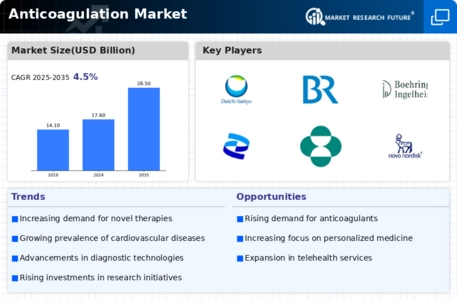
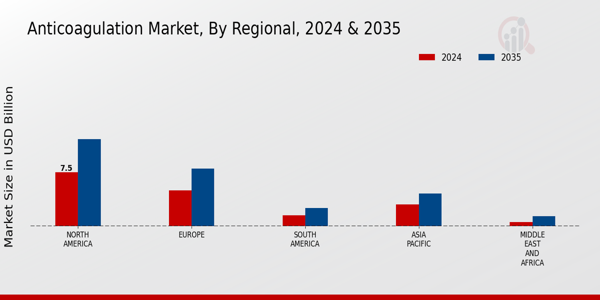


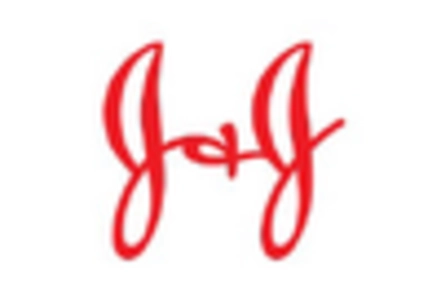
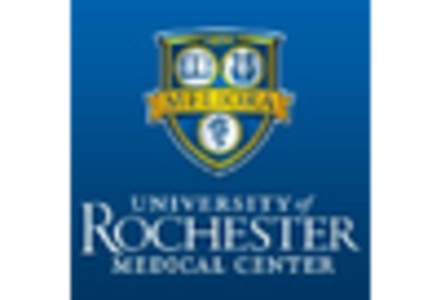
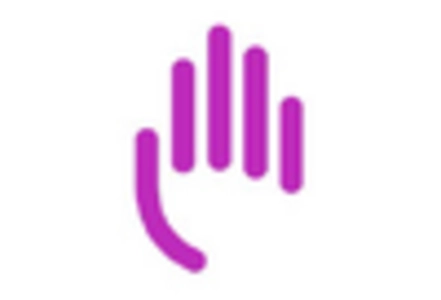









Leave a Comment